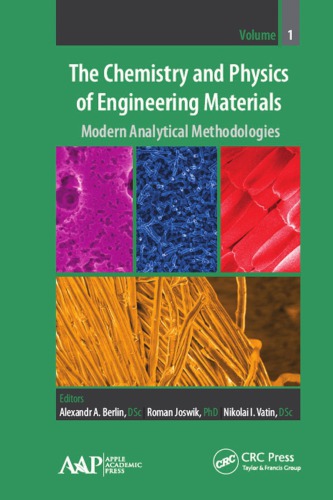

Most ebook files are in PDF format, so you can easily read them using various software such as Foxit Reader or directly on the Google Chrome browser.
Some ebook files are released by publishers in other formats such as .awz, .mobi, .epub, .fb2, etc. You may need to install specific software to read these formats on mobile/PC, such as Calibre.
Please read the tutorial at this link: https://ebookbell.com/faq
We offer FREE conversion to the popular formats you request; however, this may take some time. Therefore, right after payment, please email us, and we will try to provide the service as quickly as possible.
For some exceptional file formats or broken links (if any), please refrain from opening any disputes. Instead, email us first, and we will try to assist within a maximum of 6 hours.
EbookBell Team

0.0
0 reviewsThis volume presents leading-edge research from around the world on modern analytic methodologies in the chemistry and physics of engineering materials that have potential for applications in several disciplines of engineering and science. Contributions range from new methods to novel applications of existing methods. The collection of topics in this volume reflects the diversity of recent advances in chemistry and physics of engineering materials and provides a broad perspective that will be useful for scientists as well as for graduate students and engineers.
Topics in the book include
• methods for the quality of gas-filled polymer materials
• radiometric measurements deposits of surface water
• hydrophobic material-supported platinum catalysts
• concepts of the physical chemistry of polymers in technologies and environmental protection
• application-able radicals for the study of behavior of biological systems
• surface-modified magnetic nanoparticles for cell labeling
• sorption of industrial dyes by inorganic rocks from aqueous solutions
• various method for steel surface modification
• recent advances in fire retardant composites
• much more
This volume is also sold as part of a two-volume set. Volume 2 focuses on the limitations, properties, and models of engineering materials.